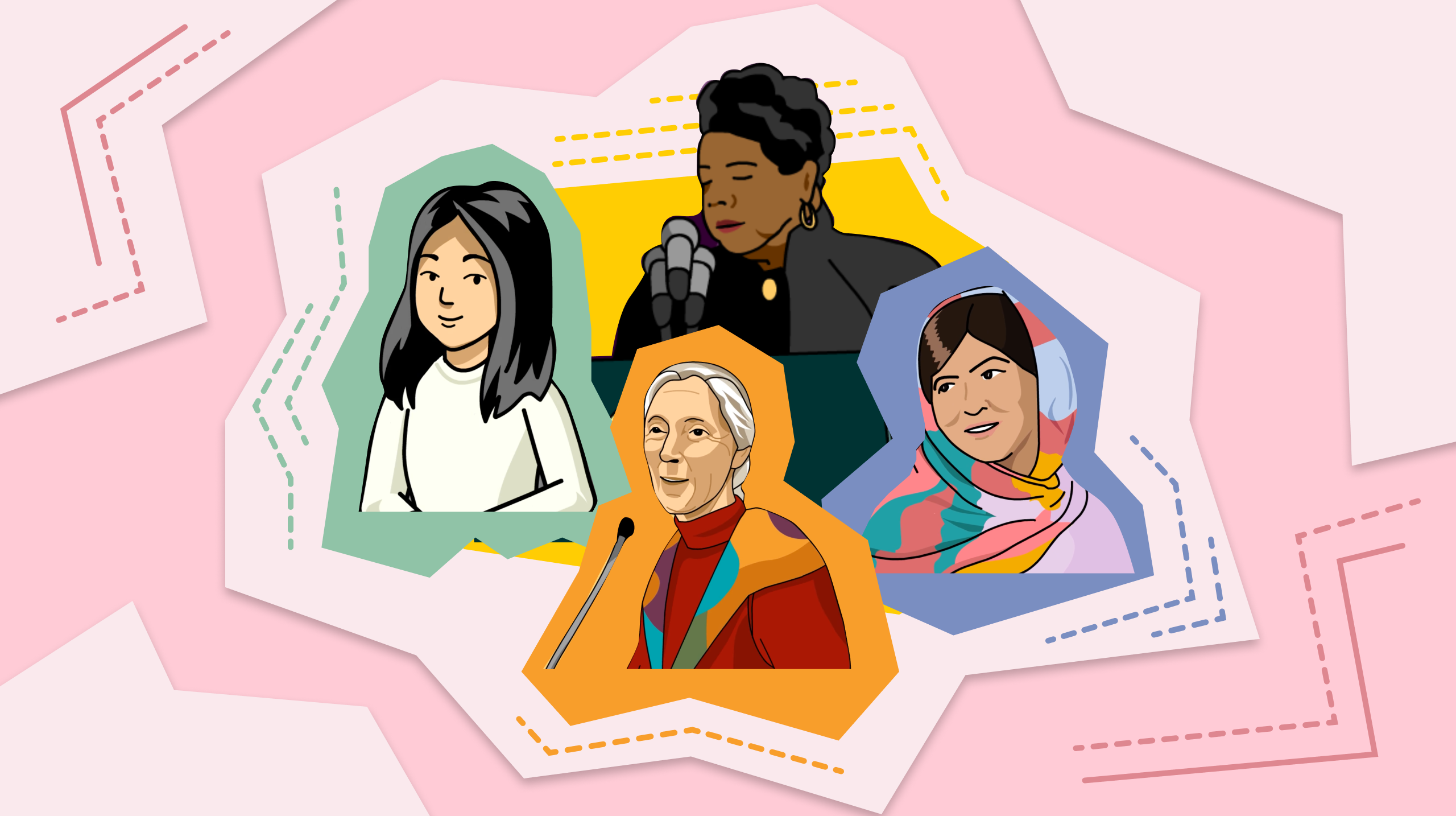Learning Activities
3 Impactful Ways to Celebrate Women’s History in Every Classroom

In Amanda Pierman’s high school chemistry, biology, and anatomy classes, students learn about women’s history. They study Marie Curie’s discoveries about the atom and Rosalind Franklin’s contributions to our understanding of DNA structure.
Her classroom is proof that the accomplishments and impact of women can and should be celebrated beyond a history textbook, and even seamlessly fit into subjects like math and science. Pierman, who is a Certified BrainPOP Educator, highlights women throughout the school year, encouraging students at The Benjamin School in Florida to recognize the path blazed by women who have shaped our world today.
Women’s History Month carves out a special time to honor the contributions of history-making scientists, politicians, authors, artists, and more—but it’s important to integrate these women into the curriculum all year long. Here are three suggestions for how every teacher can celebrate women in March and beyond:
1. Highlight History-Making Women
Highlighting historically significant women is a simple way to celebrate Women’s History Month in every classroom and open the doors to cross-curricular instruction opportunities.
Women Who Took the Lead
- Madam CJ Walker, the inventor and self-made businesswoman who may have been America’s first Black millionairess.
- Zaha Hadid, the innovative Iraqi-British architect who was the first woman to win the Pritzker Prize.
- Malala, the world’s youngest Nobel Prize laureate, she risked it all to stand up for educational rights.
- Sonia Sotomayor, the first Latina to ever sit on the Supreme Court.
- Sally Ride, the first American woman in space, breaking barriers for a new generation of space scientists!
Women in STEM
- Alice Ball, the chemist who developed the first effective treatment for leprosy, saving countless lives.
- Marie Curie, the two-time Nobel Prize recipient was a physicist and chemist who pioneered research on radioactivity.
- Wangari Maathai, a Kenyan activist who was the first African woman and environmentalist to receive the Nobel Peace Prize.
- Grace Hopper, the computer science pioneer who forever changed the way we speak to computers and the role they play in our world.
- Jane Goodall, a pioneering primatologist and conservationist known for her groundbreaking research on chimpanzees.
Women Artists and Authors
- Maya Lin, the Chinese-American artist, whose design of the Vietnam Veterans Memorial in Washington, D.C., helped change the way the nation mourns.
- Anne Frank, the young girl whose diary continues to touch readers around the world.
- Georgia O’Keeffe, whose famous images of flowers, bones, and landscapes took feminism, modernism, and American art to a new level!
- R.J. Palacio, the author of Wonder, a novel about a kid with facial differences that’s read in middle schools across the country.
- Maya Angelou, the renowned poet, author, and civil rights activist known for her autobiographical works, including I Know Why the Caged Bird Sings.
Women’s History for Young Learners
- Amelia Earhart, the first female aviator to fly solo across the Atlantic Ocean.
- Dr. Mae Jemison, the engineer, physician, NASA astronaut, and the first Black woman to go to space!
- Harriet Tubman, the abolitionist who risked it all to help herself and others escape slavery through the Underground Railroad.
- Clara Barton, the founder of the American Red Cross and Civil War nurse who devoted her life to helping others.
- Ruby Bridges, a civil rights icon who, at six years old, became the first Black child to integrate an all-white elementary school in the South.
2. Code an Interview
BrainPOP offers a range of creative ways for students to bring women’s stories to life, including a movie maker and coding.
With Creative Coding, students can use block or text-based coding to build a museum exhibit, code a newscast, or design a flag honoring their favorite ground-breaking women in history.
To Pierman, these types of creative activities help focus lessons on women’s contributions rather than tying their significance to gender. When developing lessons, Pierman acknowledges the hurdles women face, then focuses on their accomplishments and contributions to society.
3. Discuss Historic and Current Women’s Issues
Pierman also makes a point of integrating women’s health topics into her curriculum. When she asks students what the number one killer of women is, most guess breast cancer. It’s actually heart disease. Students then explore the difference in male and female heart disease.
“[Men] need to know all about women’s health just as much as women need to understand men’s health—we’ve got to help each other in the end,” Pierman said. “We’ve all got hearts that all need help.”
Don’t Forget: Don’t Stop at the End of March!
Keep the learning going all year long. For inspiration, be sure to explore BrainPOP’s growing collection of women’s biographies and events in our Women’s History unit.






